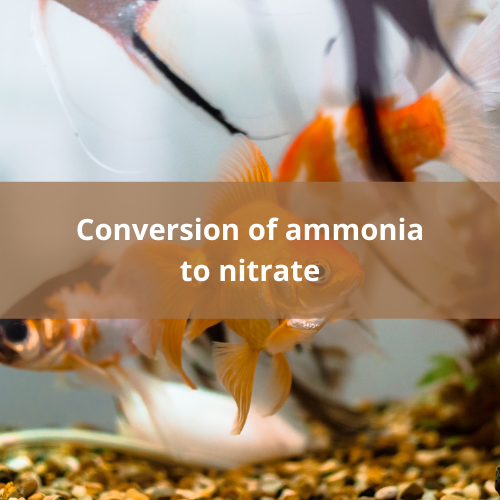![]()
The process of converting ammonia to nitrate
This is a simplified version of the basic process.
A new tank can be considered sterile because the amount of life in the water is minimal to nonexistent. Bacteria will usually be the first life form in a new tank. The most serious issue with a new aquarium is that it suffers from the dangerous “chicken before the egg” syndrome.
Before ammonia-consuming bacteria can develop or thrive in a tank, something must produce ammonia. Ammonia, on the other hand, is extremely toxic to fish and invertebrates. So, in order for your tank to remove and process ammonia, you must first have ammonia. This usually leads to dangerously high levels of ammonia in your tank before the bacteria can catch up. The ammonia-consuming bacteria waste nitrite once they start consuming the ammonia in the tank.
Nitrite, like ammonia, is toxic to fish and invertebrates, so you’ve got another problem. You must have nitrite in your tank to have nitrite-consuming bacteria. However, any live fish or inverts in your tank are at risk because they have already been exposed to potentially high levels of ammonia and are now suffering from rising nitrite levels. As the nitrite bacteria grow, they eventually catch up to the nitrite production, resulting in lower nitrite levels. As a result, nitrite bacteria produce nitrate as a waste product. Nitrate is not toxic to fish, but it is toxic to corals in small amounts. The use of a DSB is one method of removing nitrate (deep sand bed).
To summarise the preceding paragraph, ammonia must exist before ammonia-consuming bacteria can exist. Nitrite will be produced by the ammonia bacteria. Only after there are nitrite levels in your tank will the nitrite-consuming bacteria begin to grow. As a by-product, the nitrite bacteria will produce nitrate. Nitrate is not harmful to fish, but it is harmful to corals.
